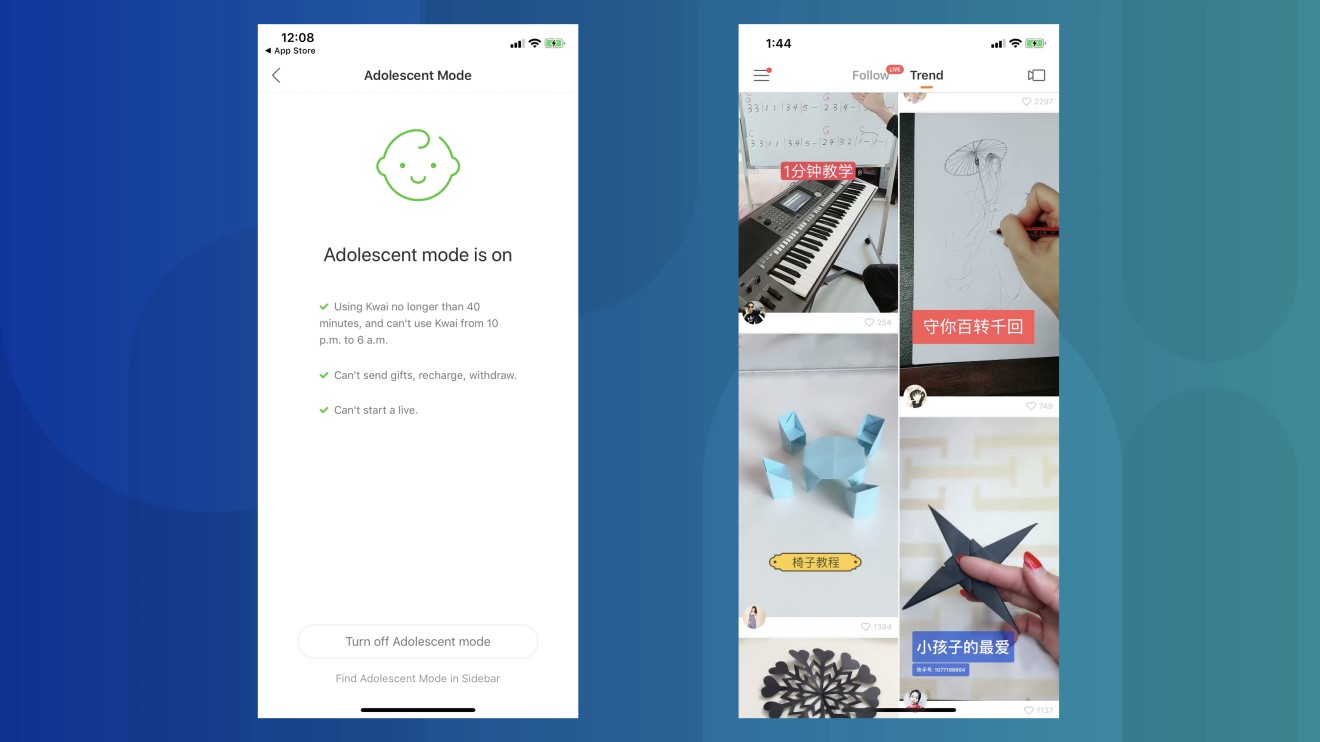
TikTok and Kuaishou now have a mode to restrict video-addicted kids
Dancing clips and funny stunts are replaced with origami and drawing tutorials
Starting today, kids in China using the local version of TikTok could find themselves locked out of the viral short video app. Douyin, known as TikTok overseas, is adding a "teenager mode". If parents turn it, their kids won't be able to use the app for more than 40 minutes a day.
TikTok, the viral short video sensation, has its roots in China
Once the teenager mode is enabled by adding a password, both Douyin and Kuaishou only let kids spend 40 minutes using the apps each day before locking them out. And they won’t be able to use the apps at all between 10pm and 6am.
Young users face other limitations, as well. They can’t send gifts, add or withdraw money from their accounts or start a live stream.

The apps’ recommended videos feeds also change when the teenager mode is turned on. Feeds once populated with videos of funny stunts and women singing and dancing are now mostly full of educational videos.
Teenager mode has been widely applauded on Chinese social media, with many people agreeing that short video apps have become too addictive. And some say that teens are not the only ones getting hooked.
For more insights into China tech, sign up for our tech newsletters, subscribe to our Inside China Tech podcast, and download the comprehensive 2019 China Internet Report. Also roam China Tech City, an award-winning interactive digital map at our sister site Abacus.

